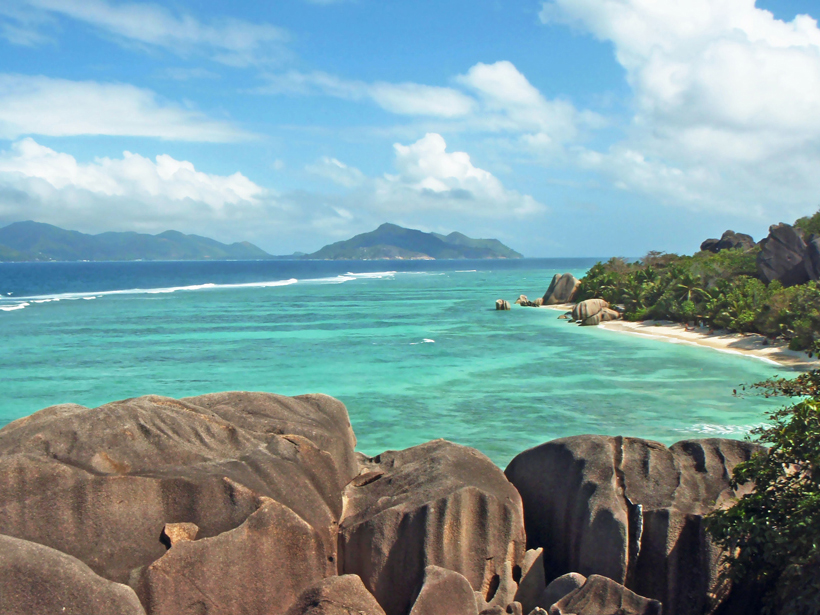On century timescales and longer, the greatest uncertainty in projecting future sea level rise is associated with the current ice sheets. Instrumental observations only capture ice sheet changes over the past few decades. Thus, geological archives of changes in ice extent and sea level are necessary to quantify and understand how ice sheets responded to climate change before instrumental data were available. Periods of Earth’s history when temperatures and sea levels were higher than they are now are of particular relevance to our future.
The workshop focused on integrating data into models to investigate past ice sheet and sea level changes.
The Atmosphere and Ocean Research Institute (AORI) at the University of Tokyo hosted a workshop in July 2015 led by the Paleo Constraints on Sea Level Rise 2 (PALSEA2) working group. The workshop focused on integrating data into models to investigate past ice sheet and sea level changes with the aim of improving our understanding of contemporary changes and better informing future projections.
Three warm periods were examined during the workshop: the late Pliocene (about 3 million years ago), the last interglaciation (LIG; 128,000 to 116,000 years ago), and the Holocene (less than 11,700 years ago).
The late Pliocene was a warm period with global mean temperatures 2°C–3°C above present temperatures and carbon dioxide levels that peaked at about 400 parts per million (roughly the same as the levels at the end of 2015). Delegates discussed the fragmented Pliocene sea level records that suffer from chronological uncertainties. Participants agreed that extracting sea level rates was an unreasonable target and that future efforts should focus on improving current constraints on the global mean sea level (GMSL) highstand, a period during which sea levels were at their highest.
Given recent improvements in data collection and reporting for coastal records, the next step would include consideration of dynamic topography—a solid Earth process that contributes a spatially variable relative sea level signal tens of meters in amplitude during the late Pliocene. The group said that the priorities should be improving the accuracy of models that simulate the solid Earth process and reducing uncertainty in model parameters.
The LIG had a climate similar to the present, and GMSL is estimated at 6–9 meters higher than at present. A consensus is emerging on the peak value, but there remains considerable disagreement on the temporal variability of GMSL during the LIG; addressing this is a target for future research.
Constraining the contributions of the Greenland and Antarctic ice sheets to LIG sea level remains an active research topic. Several workshop participants presented results from coupled ice sheet–climate model simulations to identify the most important processes controlling LIG ice sheet evolution. These results highlighted the need for improved field-based climate and ice sheet reconstructions to constrain model boundary conditions during the LIG and preceding deglacial periods.
Several other workshop participants presented compilations of Holocene sea level data sets based on archaeological, salt marsh, and coral sea level indicators spanning the past several thousand years. The comparatively good observational control during this period has been enhanced by applications of statistical methods to highlight signals in the data that can be used to understand driving mechanisms. These methods provide a useful alternative for estimating GMSL changes given a global distribution of relative sea level measurements. These GMSL estimates are, in turn, used as training data for semiempirical models to project future changes in this quantity. Such empirical methods provide a complementary alternative to the process-based modeling that has been more commonly used to project future sea levels.
Collectively, past time periods contain valuable empirical constraints on future sea level change.
Discussions in the workshop covered these warm periods, as well as sea level reconstructions during glaciations and deglaciations that add to our knowledge of climate–ice sheet interactions on different timescales and in different climate states. Collectively, all of these past time periods contain valuable empirical constraints on future sea level change.
Acknowledgments
The PALSEA2 2015 meeting was organized and convened by Glenn Milne, Yusuke Yokoyama, Ayako Abe-Ouchi, Anders Carlson, Andrea Dutton, and Antony Long. Funding was provided by Past Global Changes (PAGES), the International Union for Quaternary Research (INQUA), and AORI at the University of Tokyo. We thank all the delegates and the local hosts—Yusuke Yokoyama, Ayako Abe-Ouchi, and their research groups—for making the workshop a success.
—Benoit S. Lecavalier, Department of Physics and Physical Oceanography, Memorial University of Newfoundland, St. John’s, Newfoundland and Labrador, Canada; email: [email protected]; Gaylen Sinclair, College of Earth, Ocean, Atmospheric Sciences, Oregon State University, Corvallis; and Karen L. Vyyerberg, Department of Geological Sciences, University of Florida, Gainesville
Citation: Lecavalier, B. S., G. Sinclair, and K. L. Vyyerberg (2016), Sea level and ice sheet changes during past warm periods, Eos, 97, doi:10.1029/2016EO044527. Published on 1 February 2016.
Text © 2016. The authors. CC BY-NC-ND 3.0
Except where otherwise noted, images are subject to copyright. Any reuse without express permission from the copyright owner is prohibited.

